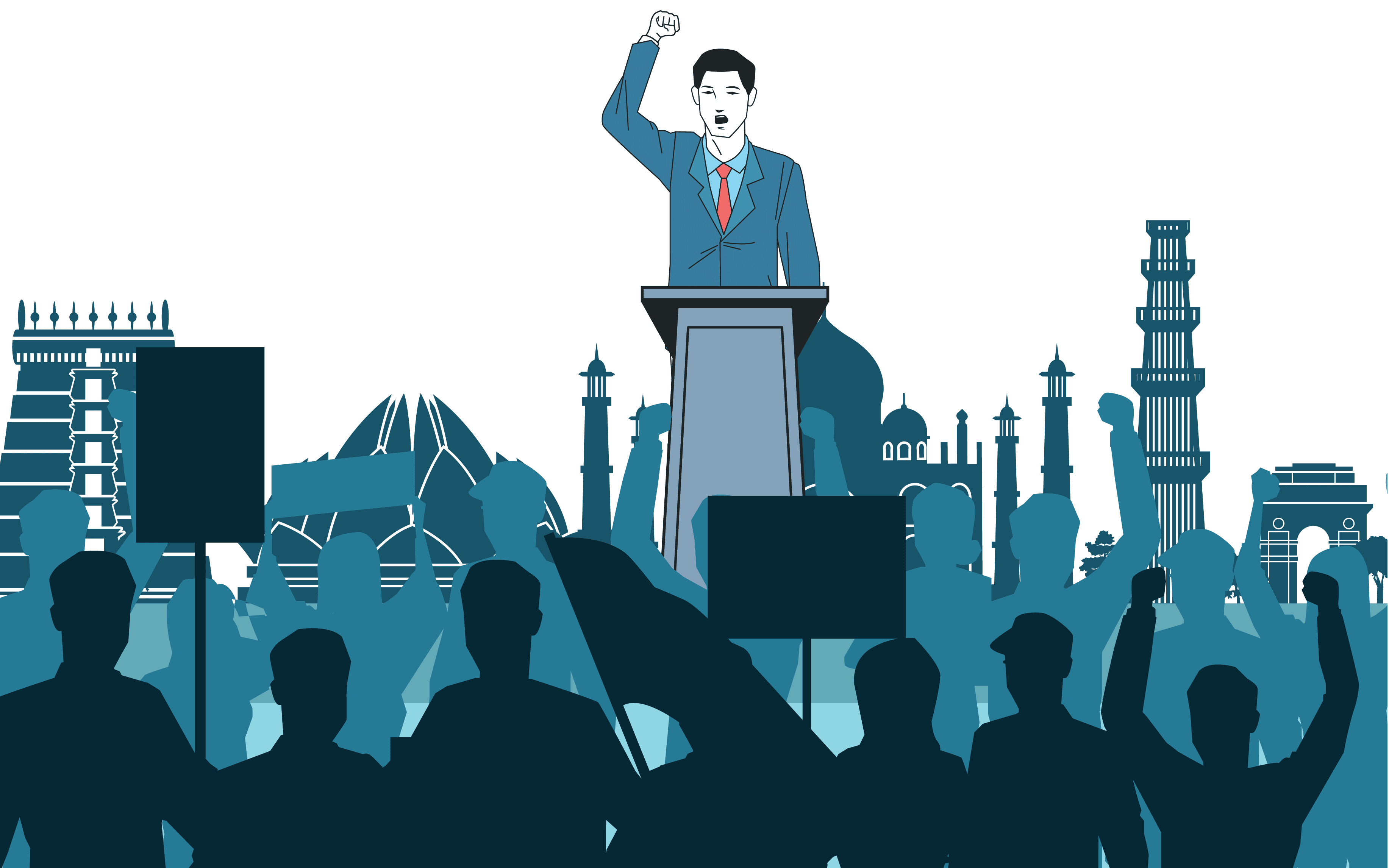Political Opinion Analysis - Understanding Public Sentiment Using Programming Languages
Politics has always been a topic that sparks debate and discussions. As an essential aspect of society, it is crucial to understand public opinion on different political issues. This is where political opinion analysiscomes into play. With the help of programming languages, political analysts can now analyze public opinion data such as polls, surveys, and social media interactions to understand what people are thinking and feeling about different political topics.
What Is Political Opinion Analysis?
Political opinion analysis is the process of analyzing public opinion data to understand people's attitudes and opinions towards different political issues. This analysis can be done using programming languages such as Pythonand R, which allow analysts to process large datasets and extract meaningful insights. Political opinion analysis can be used to understand the views of the general public, voters, and policymakers, which can help inform policy decisions, election strategies, and public discourse.
Techniques Used In Political Opinion Analysis
Sentiment Analysis
One of the most common techniques used in political opinion analysis is sentiment analysis. This technique involves analyzing text data such as social media posts, newsarticles, and comments to determine the sentiment or emotion behind them. For example, sentiment analysis can be used to identify positive, negative, or neutral sentiment towards a particular political candidate or issue.
Topic Modeling
Another popular technique used in political opinion analysis is topic modeling. This technique involves using algorithms to identify the main topics discussed in a large corpus of text data. Topic modeling can help political analysts understand which political issues are most salient to the public and how they are connected.
Network Analysis
Network analysis is another technique used in political opinion analysis. This technique involves analyzing social networks such as Twitter and Facebook to understand how information is shared and disseminated among different groups. Network analysis can help political analysts identify influential individuals, groups, and organizations and understand how they shape public opinion.
Applications Of Political Opinion Analysis
Election Strategies
Political opinion analysis can be used to inform election strategies by providing insights into voter attitudes and preferences. By analyzing polls and surveys, political analysts can identify key issues that are most important to voters and develop messaging that resonates with them.
Policy Decisions
Political opinion analysis can also be used to inform policy decisions by providing insights into public attitudes towards different policy proposals. By analyzing social media interactions and other public sentiment data, policymakers can understand how the public feels about different policy options and make decisions accordingly.
Public Discourse
Finally, political opinion analysis can help shape public discourse by providing a more nuanced understanding of public opinion. By analyzing social media interactions, news articles, and other public sentiment data, political analysts can identify trends in public opinion and shape the conversation around different political issues.
Election Forecasting
Political opinion analysis can be used to forecast election outcomes by analyzing polling data and social media activity related to political campaigns. By identifying trends and patterns in public opinion, political analysts can make predictions about election results and inform campaign strategies.
Policy Development
Political opinion analysis can inform policy development by providing insights into public sentiment towards different policy proposals. By analyzing social media data, polling data, and other sources of public opinion data, political analysts can identify areas of consensus and areas of controversy, helping to shape policy decisions that are more responsive to public opinion.
Public Relations And Crisis Management
Political opinion analysis can be used to monitor public sentiment towards political figures, parties, and organizations. By analyzing social media activity and news coverage, political analysts can identify emerging issues and potential crises, allowing for proactive public relations and crisis management strategies.
Media Analysis
Political opinion analysis can be used to analyze media coverage of political issues and campaigns. By analyzing news articles and social media posts, political analysts can identify patterns in media bias and influence, helping to inform public discourse and media literacy.
Limitations Of Political Opinion Analysis
While political opinion analysis can provide valuable insights into public sentiment, it is not without limitations. One major limitation is the quality of the data. Polls and surveys can be biased or inaccurate, and social media interactions may not be representative of the broader population. Another limitation is the difficulty of interpreting the data.
The algorithmsused in sentiment analysis and other techniques may not always accurately capture the nuances of human language and emotion, leading to misinterpretation of the data.
Future Directions Of Political Opinion Analysis
Despite these limitations, political opinion analysis has enormous potential for shaping our understanding of public sentiment towards political issues. In the future, advances in artificial intelligence and machine learning may make it possible to better capture the complexity of human language and emotion in political opinion analysis.
Additionally, new data sources, such as internet search data and mobile phone usage data, may provide new opportunities for analyzing public sentiment.
Ethical Considerations In Political Opinion Analysis
As with any data analysis, there are important ethical considerations to keep in mind when conducting political opinion analysis. For example, privacy concerns arise when analyzing social media data, as individuals may not have consented to their data being used for research purposes.
Additionally, there may be concerns about the potential for political opinion analysis to be used for targeted advertising or propaganda, which could have negative effects on the democratic process.
It is important for political analysts to consider these ethical concerns when conducting research and to take steps to ensure that the privacy and rights of individuals are respected. This may involve obtaining informed consent from participants, anonymizing data, and being transparent about the purpose and use of the data.
The Role Of Programming Languages In Political Opinion Analysis
Programming languages play a critical role in political opinion analysis, enabling analysts to process and analyze large datasets of public opinion data. Python and R are two commonly used programming languages for political opinion analysis, as they provide powerful tools for data manipulation, visualization, and statistical analysis.
Python is particularly well-suited for sentiment analysis, as it has several natural language processing libraries, such as NLTK and spaCy, that can be used to analyze text data. R is commonlyused for statistical analysis and data visualization, making it an ideal language for analyzing survey and polling data.
People Also Ask
What Are The 4 Types Of Political?
Political opinion refers to an individual's beliefs, attitudes, and views on political issues and events. It is shaped by various factors, including personal experiences, cultural background, and exposure to information and media.
Political opinion can range from the individual level, such as personal beliefs about government policies, to the collective level, such as public opinion towards political candidates or parties.
What Are The Basic Tools To Political Analysis?
The basic tools of political analysis include qualitative and quantitative research methods, data collection and analysis techniques, and theories and frameworks for interpreting political phenomena.
Qualitative research methods include interviews, focus groups, and case studies, while quantitative research methods involve statistical analysis of large datasets, such as polling or voting data. Data collection and analysis techniques include content analysis, coding, and statistical modeling. Theories and frameworks used in political analysis include institutionalism, liberalism, and realism, among others.
What Is The Meaning Of Political Opinion?
There are different ways to classify political systems, but one common way is to distinguish between the following four types:
- Monarchy: A form of government in which a monarch, such as a king or queen, is the head of state.
- Democracy: A form of government in which power is vested in the people, either directly or through elected representatives.
- Oligarchy: A form of government in which a small group of people, such as an elite class or a political party, hold power.
- Dictatorship: A form of government in which power is concentrated in the hands of a single individual or group, often through force or coercion.
Conclusion
Political opinion analysis is a versatile tool that has numerous applications for political campaigns, policy development, crisis management, and media analysis. By using programming languages to process and analyze large datasets of public opinion data, political analysts can gain valuable insights into public sentiment towards different political issues, informing policy decisions and shaping public discourse.
As technology continues to evolve, political opinion analysis will continue to be an important area of research and application for political analysts and policymakers.
Looking for more news and analysis on politics? Check outthe Washington Independent, a non-profit news organization dedicated to investigative journalism and in-depth reporting on issues related to politics and government.


